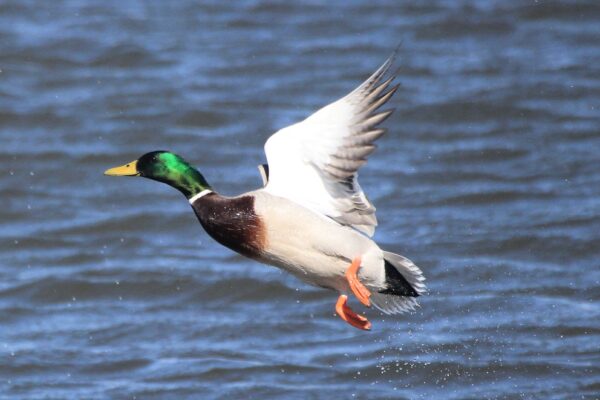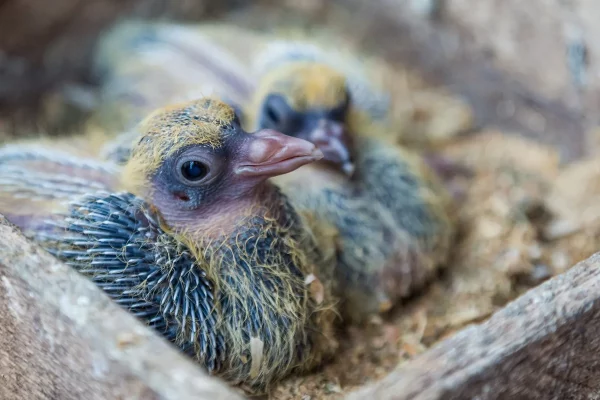Animal heads were used to represent the attributes of the gods in ancient Egyptian art. Why did the heads of the falcon, ibis, and vulture symbolize the divine? If Egyptian mythology fascinates you, you probably have inquiries about these bird goddesses.
Here’s the short response in case you’re pressed for time: Numerous significant Egyptian deities, including Ra, Thoth, and Mut, were shown with avian heads, such as falcons, ibises, and vultures. This represented their prowess in protection, cunning, and speed.
We’ll highlight the principal Egyptian gods with bird heads and examine their respective symbolic meanings in this comprehensive guide. You will discover these deities’ abilities, histories, and artistic representations. You will get an understanding of the captivating imagery of Egypt’s bird gods, regardless of your interest in ancient mythology, animal symbolism, or Egyptian culture.
Important Egyptian Gods with Heads of Birds
Numerous intriguing deities with bird heads are found in ancient Egyptian mythology. The ancient Egyptians held great regard for these bird-headed gods due to their special abilities and responsibilities in the pantheon.
Let’s examine some of the most important gods of Egypt that have bird heads.
Ra, the falcon
One of the most revered gods in ancient Egypt, Ra, was often seen with a falcon’s head. Ra, the sun god, stood for the warmth and might of the sun. Ra was thought by the Egyptians to fly over the sky by day and descend into the underworld at night.
The falcon, a bird of prey with acute vision and the capacity to fly to great heights, represented Ra’s protective and vigilant demeanor.
The Falcon, Horus
Another well-known deity in Egyptian mythology was Horus, the son of Osiris and Isis. Horus, who was often shown with a falcon’s head, was connected to protection, the sky, and monarchy. He was often represented as a celestial falcon sitting on the pharaoh’s crown, and it was thought that he was Egypt’s legitimate ruler.
Notoriety also came from Horus’s involvement in the conflict with Seth, which brought his father’s murder to justice and restored harmony to the region.
Thoth, the Ibis
Thoth was usually shown as having an ibis’ head. Thoth is the deity of magic, writing, and knowledge. The long-legged wading bird known as the ibis was highly valued due to its connection to the Nile River and its aptitude at predicting when the river would flood.
It was thought that Thoth was the gods’ scribe, in charge of preserving the harmony of Ma’at, the cosmic order. In addition, he was revered as the father of writing and as the supporter of scribes and intellectuals.
Mut, The Eagle
Mother goddess Mut was often shown with a vulture’s head on her representations. As the principal deity of Thebes, Amun’s wife, Mut was linked to protection, procreation, and motherhood. The vulture, with its reputation for being protective and nurturing, represented Mut’s status as a strong and compassionate god.
As a representation of her position as a queen and mother of all, she was often seen wearing the two crowns of Upper and Lower Egypt.
These gods with heads played important roles in ancient Egyptian religion and were held in high regard due to their extraordinary abilities and traits. The ancient Egyptians’ profound connection to nature and their belief in the heavenly powers of birds were shown by their depictions of falcons, ibises, and vultures.
Visit ancient.eu or metmuseum.org to discover more about the amazing gods of ancient Egyptian mythology.
Lesser-Known Gods with Bird Heads
The pantheon of gods and goddesses of ancient Egypt is well known, and many of them are shown as having animal heads. In Egyptian mythology, there are a number of lesser-known bird-headed gods in addition to the most well-known, Horus.
These gods were significant figures in the religious rites and beliefs of the ancient Egyptians. Let’s explore this intriguing universe of these lesser-known gods with bird heads in more detail.
Khonsu, the falcon
Khonsu, who is often shown as a falcon-headed deity, is one of the lesser-known bird-headed gods of ancient Egypt. Khonsu was thought to possess healing and protective properties and was connected to the moon. He was often seen with a crescent moon and was also revered as the deity of time.
Throughout Egypt, there were several temples devoted to Khonsu because of his great reverence. During the New Kingdom, his religion became more and more popular, and his devotion persisted until the Roman era.
The Falcon, Seker
Another bird-headed god in Egyptian mythology is Seker, who is often portrayed as a falcon-headed deity. He was connected to the afterlife and resurrection. Seker was said to guard the dead’s tombs and help them on their way to the afterlife.
He was also closely related to the deity of the dead, Osiris. Seker was often portrayed as a guardian of the dead, his mummified body and falcon head signifying his link to both the celestial and mortal worlds.
Nekhbet, The Eagle
One of the first goddesses in ancient Egypt was the vulture-headed deity Nekhbet. She was connected to monarchy, maternity, and safety. In several depictions, Nekhbet was shown extending her wings over the pharaoh, signifying her function as the defender and guardian of the Egyptian rulers and queens.
She had a strong relationship with the cobra-represented goddess Wadjet. Nekhbet and Wadjet were referred to as the “Two Ladies” when they were together and were seen as Upper and Lower Egypt’s guardians.
We can comprehend the rich and intricate mythology of ancient Egypt better by delving into the lesser-known bird-headed deities of that culture. The worship of these gods and goddesses was an essential component of ancient Egyptian religious rituals, and they had important responsibilities in their lives.
Understanding these lesser-known gods helps us to better understand the variety and intricacy of ancient Egyptian religious practices.
Significance of the Bird Illustrations
The gods and goddesses of the ancient Egyptian religious system represented many facets of life, and their system was intricate and multifaceted. The frequency of bird-headed gods in their religious imagery is an intriguing feature.
These representations of birds had deep symbolic significance and were often connected to certain traits and attributes.
Falcons Exhibited Vision and Leadership
Horus was one of the most well-known bird-headed gods in ancient Egypt, represented by a falcon’s head. Because of their rapid flight and excellent vision, falcons were held in great respect in Egyptian society.
The falcon-headed gods, including Ra and Horus, were connected to protection, vision, and leadership. They were often shown as strong, magnificent creatures that stood for the pharaoh’s divine right to reign and their capacity for transcending the material world.
The hieroglyphic representation for pharaoh, referred to as the “Horus name,” makes clear the falcon’s relationship with leadership. One of the pharaoh’s several titles, this one included a hieroglyphic representation of a falcon to denote the person’s leadership position and relationship to Horus.
Ibises Were Symbols of Writing and Wisdom
Thoth, who was shown with an ibis’ head, was another bird-headed divinity in ancient Egypt. Because of their relationship with the written word and their large beaks that resembled quills, ibises were held in high respect.
Thoth was an important person in Egyptian mythology because he was the god of writing, magic, and knowledge.
Thoth was said to have originated writing and the hieroglyphic script, and he was a major player in the creation of the world. In addition, he was regarded as the gods’ scribe and their representative in human affairs.
Thoth’s ibis-headed representation represented his relationship to wisdom, knowledge, and the power of written language.
The Symbol of Maternal Protection Was Vultures
The vulture-headed goddess Nekhbet was intimately related to the pharaoh and symbolized maternal care in ancient Egyptian mythology. Because of their protective instincts and their role in tidying up the dead, vultures were held in high regard. They were even depicted as goddesses.
The vulture headgear that Nekhbet often wore highlighted her function as a protector and guardian. She was said to keep an eye on the pharaoh and provide her with maternal comfort and counsel. The vulture-headed depiction of Nekhbet was a potent sign of maternal love and care.
Ancient Egyptian religion and culture were greatly influenced by the bird-headed gods and goddesses. These representations of birds communicated a variety of traits and attributes, including protection, leadership, and wisdom.
They functioned as a reminder of the gods’ relationship to nature and their effect on many facets of existence.
The Origins and History of the Bird Gods in Egypt
A wide variety of gods and goddesses, many having animal heads on their heads, may be found in Egyptian mythology. The gods with bird heads are among these interesting figures; their ancestors date back to prehistoric times.
Predynastic Bird Gods
Egyptians have worshipped gods with bird heads from the Predynastic era, which spanned around 6000–3150 BCE. The ibis-headed deity of learning and writing, Thoth, and the falcon-headed god of the sky, Horus, were among the avian gods that the ancient Egyptians worshipped during this period.
These gods with heads of birds were thought to possess unique abilities and ties to the divine. For instance, Horus was a major character in Egyptian mythology and was connected to the sun. He also served as an avenger and defender.
Conversely, Thoth was revered as the gods’ scribe and as a guardian of magic and wisdom.
Congruence with Regional Cults
Syncretism, the blending of various religious practices and ideas, occurred in the worship of bird-headed gods as Egypt’s civilization spread and interacted with surrounding nations.
Due to this syncretism, local cults and Egyptian bird-headed deities merged in different parts of Egypt.
The syncretism of Horus with the native deity Nekhbet, a vulture goddess connected to Upper Egypt, is one such instance. Horus the Elder, a god with the head of a falcon and the body of a human, was born from this union.
This syncretic god came to symbolize monarchy and the union of Upper and Lower Egypt.
Adapting to Contemporary Culture
There is still evidence of the ancient Egyptian gods with bird heads in contemporary Egyptian culture. Pictures of ibises and falcons are often employed as protection, strength, and wisdom symbols. Scholars and fans alike continue to study and enjoy the mythical tales and religious rituals connected to these deities.
Examining the bird-headed gods of ancient Egypt offers an enlightening look into the cultural customs and religious beliefs of one of the earliest civilizations in history. These gods were potent representations of heavenly might, protection, and knowledge, and the fact that they are still prevalent in Egyptian culture today is evidence of their importance to the ancient world.
Final Thoughts
Egypt’s bird-headed gods combined avian and human symbolism to create instantly recognizable and striking gods. Every bird image conjured up essential qualities like as swiftness, wisdom, or caressing that enhanced the gods’ divine functions and abilities.
We can better understand the creativity and complexity of Ancient Egyptian religion by dissecting the mythology and images surrounding the raptor and vulture gods. Tantalizing hints about how these ancient people comprehended and honored the secrets of their gods may be found in the bird imagery.





